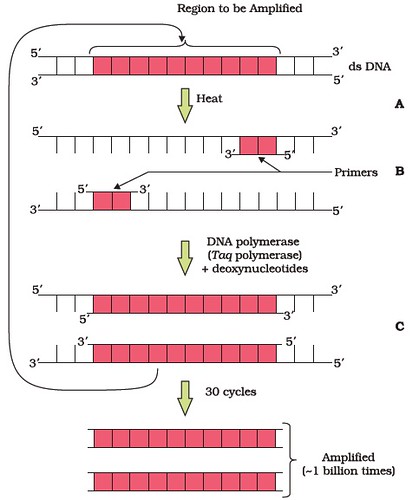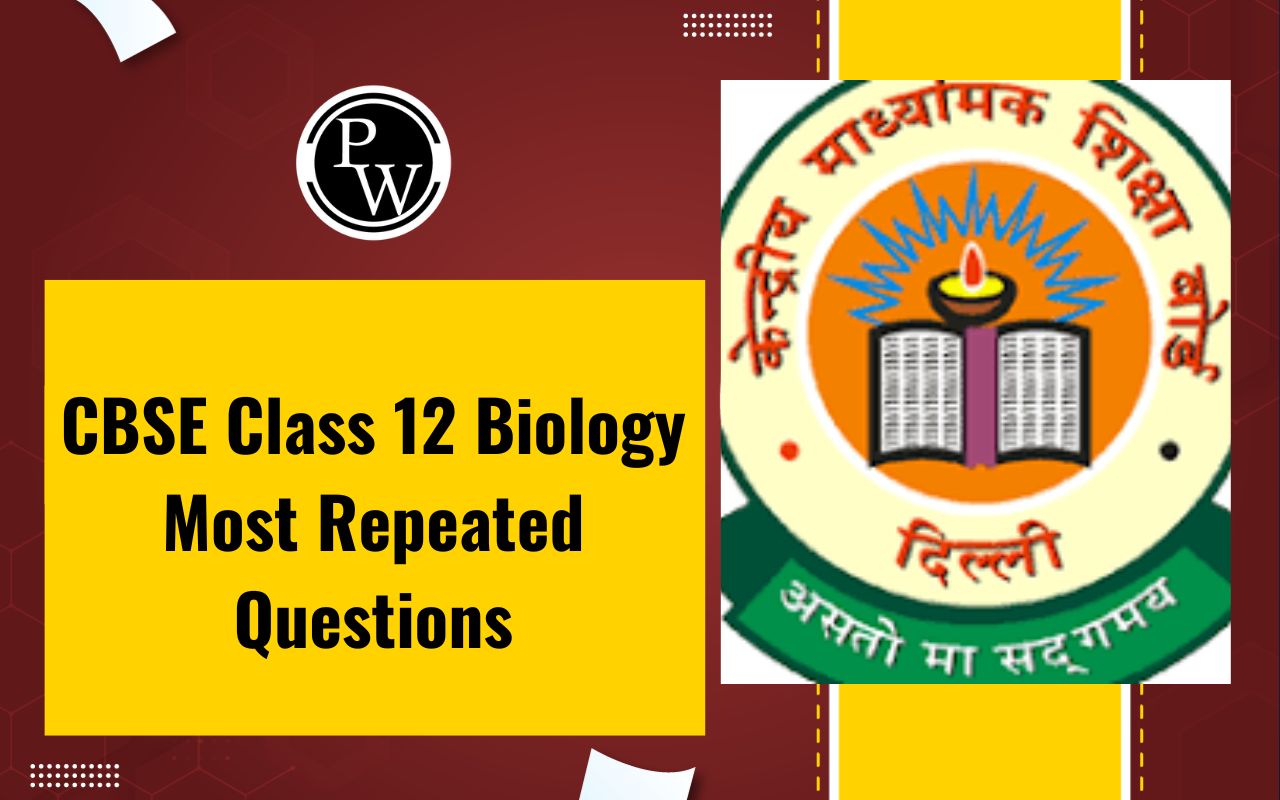
CBSE Class 12 Biology Notes Chapter 11: These notes are important for students preparing for their CBSE Class 12 board exams in Biology. Chapter 11 Biotechnology: Principles and Processes, focuses on the fundamental techniques and concepts of biotechnology, such as recombinant DNA technology, gene cloning and the role of enzymes in genetic manipulation. The notes simplify complex biological processes making them easier for students to grasp.
By studying this chapter students can gain a deeper understanding of how biotechnology is applied in various fields like medicine, agriculture and industry.CBSE Class 12 Biology Notes Chapter 11 Biotechnology: Principles and Processes Overview
These notes for CBSE Class 12 Biology Chapter 11 Biotechnology: Principles and Processes are prepared by subject experts of Physics Wallah. They provide a clear and concise overview of important concepts such as recombinant DNA technology, gene cloning and the role of restriction enzymes and vectors in genetic engineering. By breaking down complex topics into simpler explanations, these notes help students easily understand the fundamental principles of biotechnology. These expert-created notes ensure thorough preparation making it easier for students to secure good marks in their board exams.CBSE Class 12 Biology Notes Chapter 11 Biotechnology: Principles and Processes PDF
CBSE Class 12 Biology Notes for Chapter 11 Biotechnology: Principles and Processes provide a detailed understanding of important biotechnology concepts. Whether you're revising for exams or building a strong foundation in biology these notes are an invaluable resource. The PDF link for these notes is available below for easy access and download.CBSE Class 12 Biology Notes Chapter 11 Biotechnology: Principles and Processes PDF
CBSE Class 12 Biology Notes Chapter 11 Biotechnology: Principles and Processes
Here we have provided CBSE Class 12 Biology Notes Chapter 11 Biotechnology: Principles and Processes-DNA Cloning
DNA cloning is the process of producing multiple identical copies of a specific DNA fragment. This is an essential technique in genetic engineering and biotechnology. To achieve DNA cloning, cloning vectors are used, and these vectors must possess the following properties:- Small Size but Large DNA Capacity : The vector should be small for easier manipulation but must carry a large DNA insert.
- Origin of Replication : It should have an origin of replication to enable autonomous replication within the host organism.
- Restriction Site : The vector must have a restriction site where the DNA fragment can be inserted.
- Selectable Marker : It should include a marker gene to help identify and select recombinant organisms.
- Multiple Cloning Sites : The vector should have several sites where different DNA fragments can be inserted for versatility in cloning experiments.
Read More - Toughest and Easiest Chapters in CBSE Class 12 Biology
What Is Bioprocess Engineering?
Bioprocess engineering involves the cultivation and multiplication of cells in bioreactors to produce large quantities of biological products. This process results in a high yield of the desired proteins or other biological materials. Once produced, the products undergo downstream processing , which includes purification and quality control checks. Before being released or further developed, the products are tested to ensure safety and effectiveness. Bioprocess engineering is widely used in the production of antibiotics, vaccines and other therapeutic medicines playing a important role in the biotechnology industry.CBSE Class 12 Biology Notes Chapter 11 FAQs
What is biotechnology?
Biotechnology is the use of living organisms, cells, or biological systems to develop products and technologies that improve human life and the health of our planet. It combines principles of biology, chemistry and engineering.
What are the main principles of biotechnology?
The main principles include genetic engineering, which involves modifying an organism's DNA and bioprocess engineering which focuses on the large-scale production of biological products under controlled conditions.
What is recombinant DNA technology?
Recombinant DNA technology, also known as genetic engineering, is the process of joining together DNA molecules from different sources to create a new genetic sequence. It allows for the manipulation and cloning of genes.
What is bioprocess engineering?
Bioprocess engineering involves the design and optimization of processes that utilize living cells or enzymes to produce valuable products. It includes the growth of cells in bioreactors and the purification of products.
What role do restriction enzymes play in genetic engineering?
Restriction enzymes are proteins that cut DNA at specific sequences, allowing scientists to isolate and manipulate particular segments of DNA for cloning or recombinant DNA technology.
🔥 Trending Blogs
Talk to a counsellorHave doubts? Our support team will be happy to assist you!

Check out these Related Articles
Free Learning Resources
PW Books
Notes (Class 10-12)
PW Study Materials
Notes (Class 6-9)
Ncert Solutions
Govt Exams
Class 6th to 12th Online Courses
Govt Job Exams Courses
UPSC Coaching
Defence Exam Coaching
Gate Exam Coaching
Other Exams
Know about Physics Wallah
Physics Wallah is an Indian edtech platform that provides accessible & comprehensive learning experiences to students from Class 6th to postgraduate level. We also provide extensive NCERT solutions, sample paper, NEET, JEE Mains, BITSAT previous year papers & more such resources to students. Physics Wallah also caters to over 3.5 million registered students and over 78 lakh+ Youtube subscribers with 4.8 rating on its app.
We Stand Out because
We provide students with intensive courses with India’s qualified & experienced faculties & mentors. PW strives to make the learning experience comprehensive and accessible for students of all sections of society. We believe in empowering every single student who couldn't dream of a good career in engineering and medical field earlier.
Our Key Focus Areas
Physics Wallah's main focus is to make the learning experience as economical as possible for all students. With our affordable courses like Lakshya, Udaan and Arjuna and many others, we have been able to provide a platform for lakhs of aspirants. From providing Chemistry, Maths, Physics formula to giving e-books of eminent authors like RD Sharma, RS Aggarwal and Lakhmir Singh, PW focuses on every single student's need for preparation.
What Makes Us Different
Physics Wallah strives to develop a comprehensive pedagogical structure for students, where they get a state-of-the-art learning experience with study material and resources. Apart from catering students preparing for JEE Mains and NEET, PW also provides study material for each state board like Uttar Pradesh, Bihar, and others
Copyright © 2025 Physicswallah Limited All rights reserved.
Get App

 Transformation of recombinant DNA into host cells can be achieved using various methods, including:
Transformation of recombinant DNA into host cells can be achieved using various methods, including:









